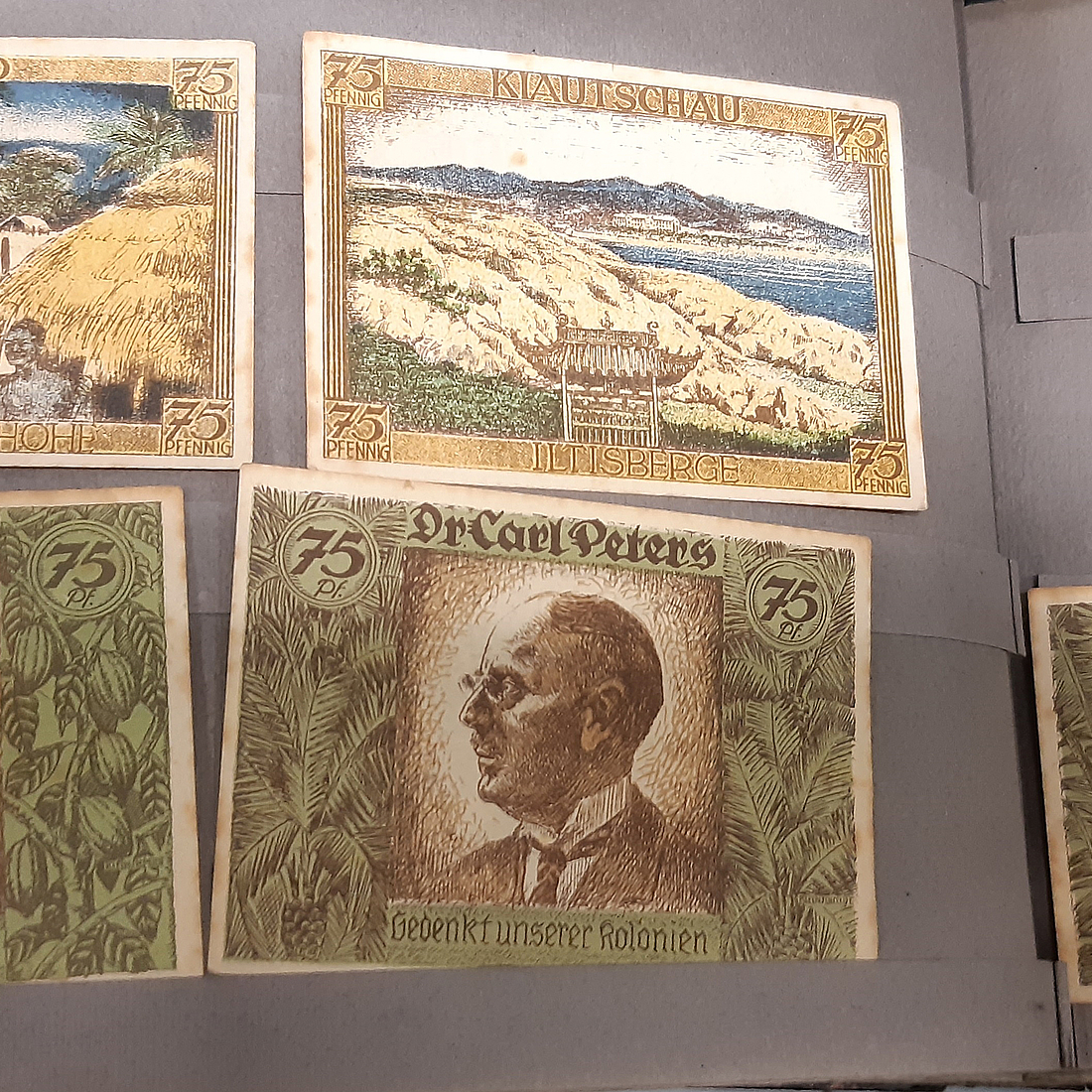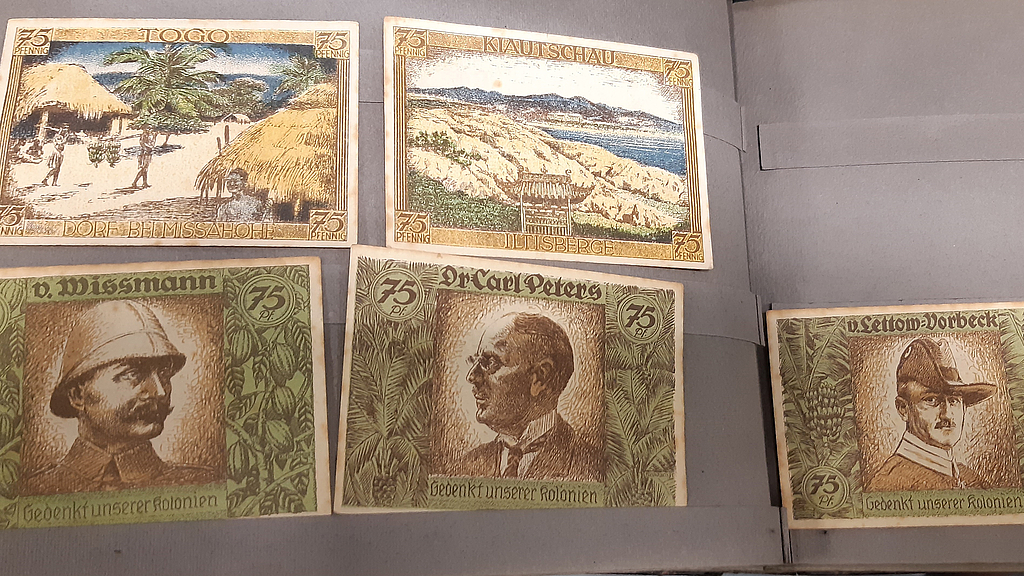Archival item of the month: Emergency money for the "German-Hanseatic Colonial Remembrance Day"
In the "Archival item of the month" series, the German Maritime Museum (DSM) / Leibniz Institute of Maritime History has been presenting a special treasure from the archive every four weeks since January 2023. In February 2024, research assistant Dr Alexander Reis opens an album in which emergency money from the 1920s was collected.
The archive of the German Maritime Museum contains an album of emergency money from the early 1920s (Fig. 1). Like the other notes in the album, the ones presented here belong to so-called serial notes and not to emergency money in the proper sense. At the beginning of the First World War, the Reichsbank issued classic emergency money, as coins whose precious metal value exceeded that of the nominal value were melted down by the state for war purposes or hoarded by private individuals. Finally, serial emergency money was also issued by unauthorised private individuals in series to encourage collecting, but this was no longer a means of payment but a pure collector's item. In addition to the multiple occurrence of the same denominations, these series were also characterised by unusual denominations. The notes were available in bookshops and other shops. For the first time, a new way of collecting motifs, depictions or printing techniques emerged.
The culture of remembrance of German history that was created at the same time served primarily as a means of political propaganda. Misprints were quite common in the rapid, inexpensive production process, for example due to misaligned printing plates, as can be seen on the front of a specimen from the Maritime Museum (Fig. 2).
The notes, measuring ten by seven centimetres, belong to two series of six each, which show views of places and landscapes of former colonies as well as portraits of personalities who were important for the history of the German colonies (Fig. 1). In addition to the face value in the lower third of the image field, the obverses also bear an announcement of a so-called German-Hanseatic Colonial Remembrance Day in Hamburg, Berlin and Bremen. One series shows a map of Africa with the names of the former German colonies and, at the lower edge of the image between sheet motifs, map sections with the other colonies labelled "Kiautschau" and "German South Sea Islands" (Fig. 2). Two palm trees frame the image on the right and left.
The second series shows a palm tree on the obverse in front of the sun rising over the sea, flanked by the city coats of arms of Hamburg and Bremen (Fig. 3). Three dates, 1682, 1884 and 1918, which surround the sun's rays, mark the dates of German colonial involvement in Africa: in 1682, the Brandenburg-African Company was founded, which established trading posts in Africa and the Caribbean in the second half of the 1680s. From 1884 there was an imperial commissioner in Cameroon, and at the end of the First World War the colonies finally fell to the victorious powers.
On the backs of the notes, the name of the colony is shown in the upper frame in a rectangular frame with the value indication in the corners, while the name of the location depicted is shown in the lower frame (Fig. 1). The image templates were slightly altered, mainly by the addition of people and buildings. This is particularly noticeable in the image of the "Iltisberge", in which the gate of the temple of the "City God" of Kiautschau was placed in the centre of the foreground in order to place the landscape even more clearly in the East Asian architectural style (figs. 4, 5, 6).
On the one hand, the illustrations were intended to convey the landscape with its characteristic flora and the living environment of the indigenous population and, on the other, to convey positive aspects of German colonial rule by depicting buildings such as the beach hotel in Kiautschau (Fig. 5).
On the backs of the other series, portraits of personalities who played a key role in establishing and consolidating German colonial rule in Africa are published under their names, as well as Imperial Chancellor Otto von Bismarck, who also paved the way politically for the establishment of German colonies by convening the Berlin Congo Conference in 1884. With the exception of Bismarck's picture, which is framed by oak leaves, the picture depicts useful plants from the colonies: Banana trees, coconut and date palms, tobacco and cocoa (Fig. 1). The signature "Kleinschmidt" is usually found in these decorative zones (fig. 7). For artists at the time, the design of serialised notes was a welcome opportunity to obtain commissions, which also gave them the chance to become better known beyond their own region. It is possible that Paul Kleinschmidt, who was living in Berlin at the time, provided the designs for the notes.
As harbour and trading cities whose colonial goods importers and traders, shipping companies and port companies had contributed to the establishment and exploitation of the German colonies, Hamburg and Bremen were of particular importance in establishing the revisionist memory of the former colonies. This is because the threads of colonial economic development came together in both places, along with the staging and legitimisation of Germany as a colonial power. Furthermore, the Bernhard Nocht Institute for Tropical Medicine and the Colonial Institute also conducted scientific research into the colonies in Hamburg. Numerous ethnological objects from the colonies found their way into the collections of the Überseemuseum in Bremen with extensive help from the shipping company Norddeutscher Lloyd.
Franz Grewe, named on the notes under "Management", wrote to the president of the German Colonial Society in Berlin in 1921. Grewe envisioned a "German-Hanseatic Colonial Memorial Day" with lectures in Bremen, Hamburg and Berlin, organised by the Colonial Society. He wanted to cover the estimated costs by selling ten thousand of each of the series described above at four and a half Reichsmarks each and certainly hoped to make a profit for himself. However, the colonial society expressed reservations and no co-operation was forthcoming, so Grewe had the notes printed himself. Whether Grewe even held a colonial event with guest speakers until 31 March 1922 must therefore remain an open question. It is also unclear how many copies were sold and by when. The ban on printing serial notes by the Reichsbank on 17 July 1922 ultimately caused interest in collecting the notes to wane rapidly.
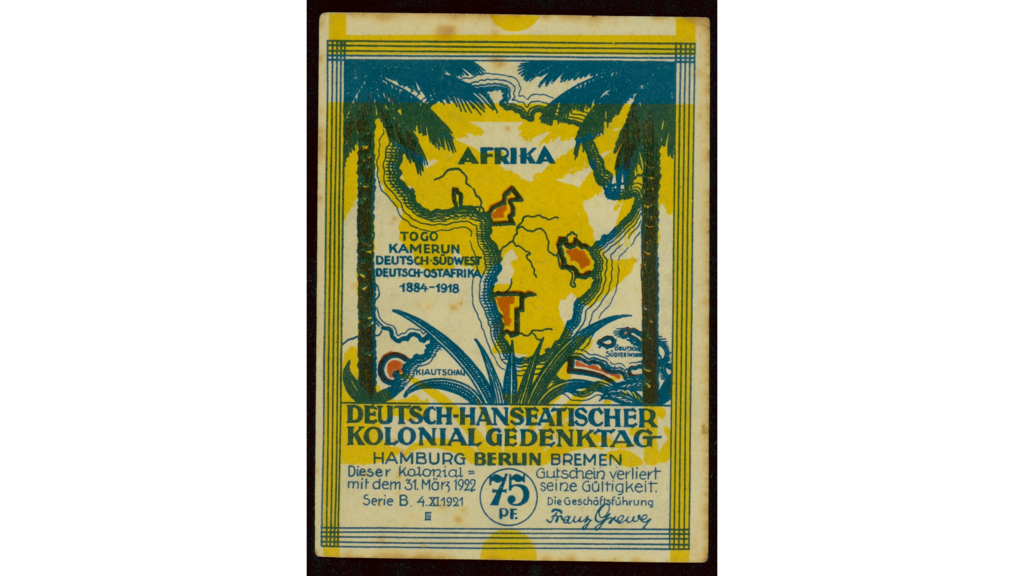
Front sides of the serial bills for the "German-Hanseatic Colonial Remembrance Day".
Photo: DSM Archiv
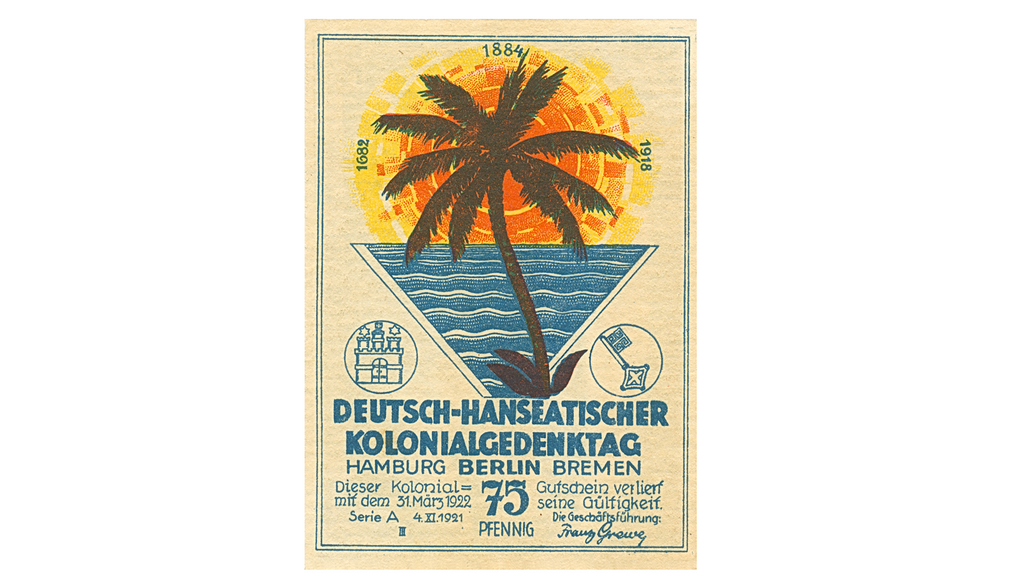
Front sides of the serial bills for the "German-Hanseatic Colonial Remembrance Day".
photo: DSM Archiv
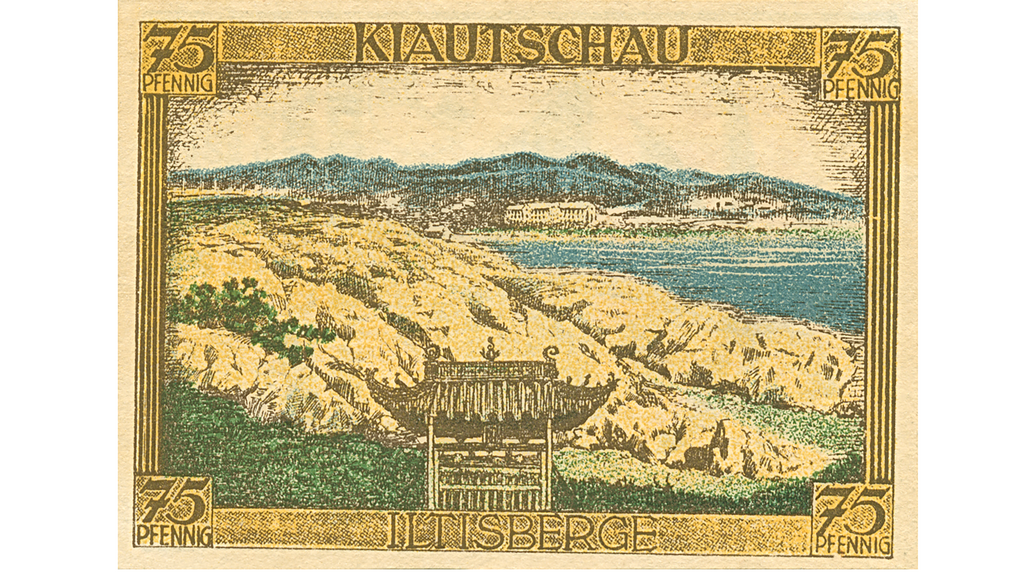
Reverse of one of the serial bills with a view of Tsingtau.
Photo: DSM Archiv
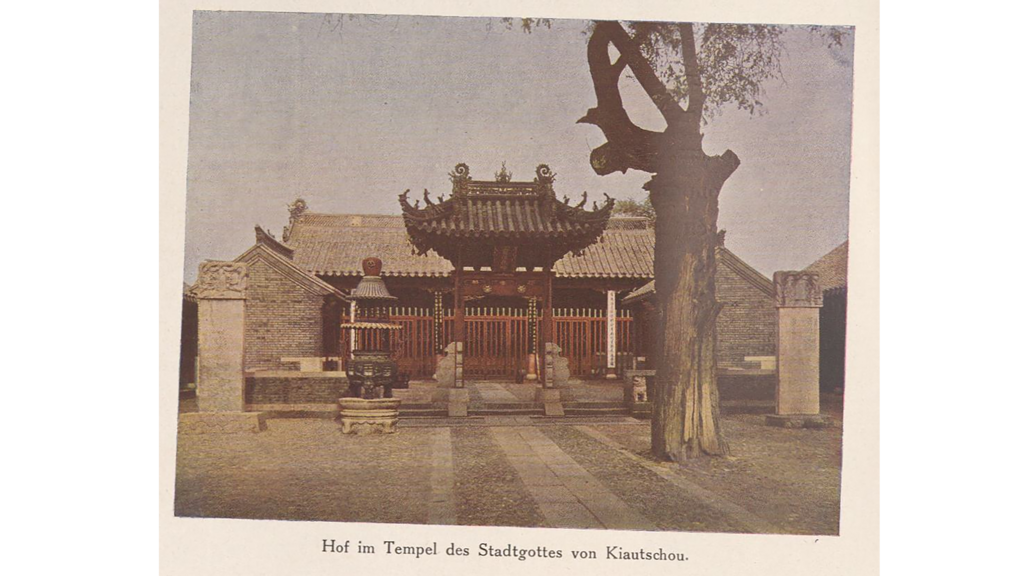
Bildvorlage zu Abb. 4
Foto: DSM Archiv

